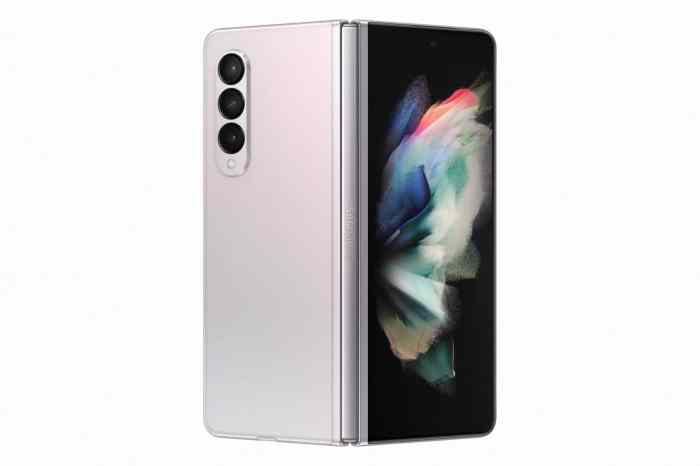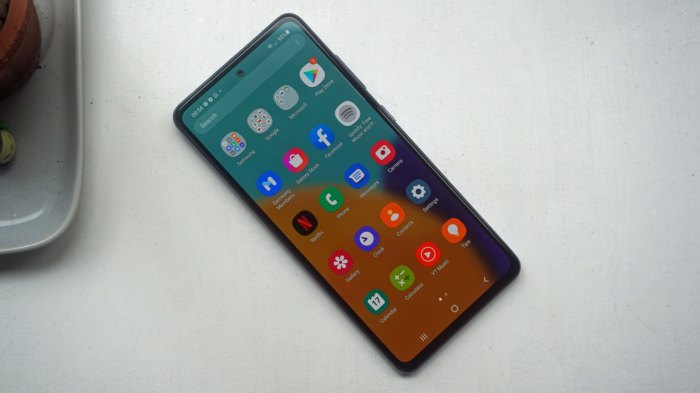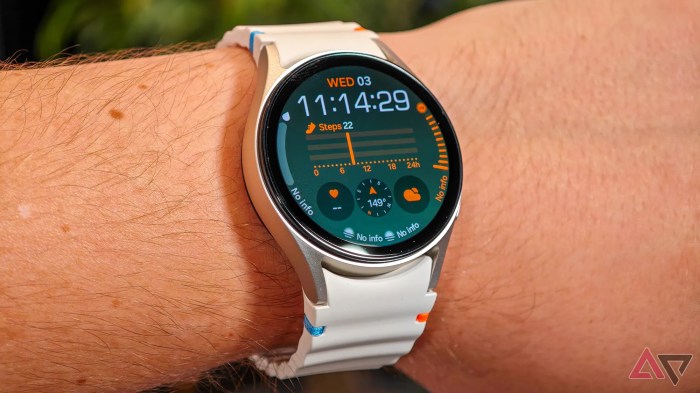samsung galaxy galaxy serves as a testament to the evolution of smartphone technology, showcasing how innovation and user-centric designs have shaped the devices we rely on today. Over the years, the Samsung Galaxy series has transcended mere functionality to become a symbol of cutting-edge technology, continually pushing boundaries with each new release. From its inception to the latest models, the Galaxy lineup reveals a fascinating timeline filled with groundbreaking features and design transformations that cater to the diverse needs of consumers.
This exploration delves into the standout characteristics of Samsung Galaxy devices, from impressive camera capabilities that redefine photography to battery technologies that keep users connected longer. Notably, a comparative analysis with competitors like Apple and Google illustrates the unique advantages of the Galaxy series, while an overview of essential accessories rounds out the ecosystem that enhances user experience.
Overview of Samsung Galaxy Series
The Samsung Galaxy series has established itself as a cornerstone in the smartphone industry, reflecting both technological innovation and design evolution. Since its inception, the series has transformed significantly, adapting to changing consumer needs while consistently pushing the boundaries of mobile technology. The Galaxy series began in 2009 with the launch of the Samsung Galaxy GT-I7500, marking the company’s entry into the Android market.
Over the years, the series has seen a plethora of advancements, including improvements in display technology, camera capabilities, and software features.
Timeline of Major Releases and Innovations
Understanding the timeline of major releases provides insight into how the Galaxy series has evolved. Each iteration has brought new features that have set benchmarks in the industry. Here is a concise overview of the significant milestones:
- 2010: Introduction of the Galaxy S, which featured a Super AMOLED display and a 5 MP camera.
- 2011: Launch of the Galaxy S II, renowned for its dual-core processor and lightweight design.
- 2012: Release of the Galaxy S III, which showcased a more refined design and innovative features like Smart Stay.
- 2014: The Galaxy S5 introduced water resistance and a fingerprint sensor.
- 2016: The Galaxy S7 and S7 Edge were praised for their design, camera improvements, and introduction of dual-edge displays.
- 2020: The Galaxy S20 series launched with 5G connectivity and advanced camera systems, including the 108 MP sensor.
- 2023: The Galaxy S23 series exemplified Samsung’s commitment to performance and sustainability, featuring eco-conscious designs and high-performance capabilities.
Design Changes Across Different Galaxy Models
The design language of the Samsung Galaxy series has evolved remarkably over the years, reflecting both aesthetic trends and functional advancements. Initially characterized by a plastic body, the series has transitioned to premium materials such as glass and metal.The key design changes include:
- The shift from a rectangular form factor to more ergonomic shapes that fit comfortably in the hand.
- The introduction of Infinity Displays, which maximize screen real estate and minimize bezels, first seen in the Galaxy S8.
- The emergence of the foldable design in the Galaxy Z series, showcasing Samsung’s innovation in mobile form factors.
The color palettes have also diversified, moving from basic monochromes to vibrant hues and finishes that cater to a broader audience. Additionally, the positioning of buttons and ports has been refined for improved usability, demonstrating Samsung’s attention to user experience.
“With each new model, Samsung has not only redefined its flagship devices but also set trends that influence the entire industry.”
Key Features of Samsung Galaxy Devices

Samsung Galaxy devices are renowned for their innovative technology and user-centric design, making them a popular choice among smartphone users around the globe. The latest models in the series exemplify the company’s commitment to pushing boundaries in performance, aesthetics, and functionality. In this section, we explore the standout features that define the latest Samsung Galaxy smartphones.
Camera Capabilities and Advancements in Photography Technology
The camera system in Samsung Galaxy devices has consistently set a benchmark in mobile photography. Recent models boast multi-lens setups that enhance versatility in shooting scenarios. The advancements in camera technology include:
- High Megapixel Sensors: The latest Galaxy devices come equipped with high-resolution sensors, such as the 108 MP camera found in the Galaxy S21 Ultra, allowing for stunning detail and clarity.
- Super Steady Video: Enhanced stabilization technology ensures smooth video recordings, even during high-action scenes, making it ideal for creators and everyday users alike.
- Night Mode: Improved low-light capabilities enable users to capture vibrant and clear images in dark environments, reducing noise and enhancing brightness.
- AI Enhancements: Artificial intelligence plays a crucial role in optimizing photos automatically, adjusting settings based on context, and delivering the best results with minimal effort.
- Pro Mode Features: Advanced photography enthusiasts can access Pro Mode settings, allowing for manual adjustments in ISO, shutter speed, and focus, offering a DSLR-like experience in a smartphone.
“The integration of cutting-edge technology in camera systems elevates the Samsung Galaxy experience, catering to both casual users and photography professionals.”
Battery Performance and Charging Technologies
Samsung Galaxy smartphones prioritize long-lasting battery life and quick charging solutions, addressing one of the most critical needs of modern smartphone users. The latest devices showcase several key enhancements in these areas:
- Large Battery Capacity: New models often feature batteries exceeding 4000 mAh, providing all-day usage on a single charge, even with heavy multitasking.
- Fast Charging: The incorporation of fast charging technology significantly reduces downtime, allowing users to charge their devices rapidly, with some models supporting up to 45W wired charging.
- Wireless Charging: Many Samsung Galaxy smartphones support wireless charging and reverse wireless charging, enabling users to charge compatible accessories on the go.
- Power Saving Modes: Enhanced power-saving features allow users to manage battery consumption effectively, extending battery life through optimized performance settings.
“Sustainability of battery life is a focal point for Samsung Galaxy devices, providing users with the functionality they need without compromise.”
Comparing Samsung Galaxy with Competitors
The smartphone market is a fiercely competitive landscape, with brands vying for supremacy through innovative features, performance, and user experience. Among these, Samsung’s Galaxy lineup stands tall, frequently compared to giants like Apple’s iPhone, Google Pixel, and OnePlus devices. Each of these brands brings unique strengths and weaknesses to the table, making it essential for consumers to understand how they stack up against one another.
Comparison with Apple iPhone Models
When comparing Samsung Galaxy devices with Apple iPhone models, several key features and performance metrics come into play. Both brands are known for their high-quality build and advanced technology, but they cater to different user preferences.
Operating System
Samsung runs on Android, offering extensive customization options. In contrast, Apple’s iOS provides a seamless ecosystem, but with less flexibility.
Hardware
Samsung often leads in screen technology, utilizing AMOLED displays that provide richer colors and deeper blacks than the LCDs commonly found in iPhones.
Camera Performance
While iPhones excel in video recording and color accuracy, Samsung devices often deliver higher megapixel counts and versatility with multiple lenses.
Battery Life
Samsung’s Galaxy devices typically offer larger batteries with faster charging capabilities, allowing for longer usage times compared to iPhones.
“Samsung’s AMOLED screens and customizable interface give it an edge in display and user experience over Apple’s more uniform offerings.”
Advantages and Disadvantages of Samsung Galaxy Phones versus Google Pixel
Samsung Galaxy phones and Google Pixel devices cater to different segments of the market, with each having its fair share of advantages and disadvantages.
Camera Quality
Google Pixels are renowned for their computational photography, producing stunning images even in challenging lighting conditions. Samsung, however, offers more extensive camera features and options for users to explore.
The Samsung Galaxy Fold 1 revolutionized the smartphone industry by offering a unique foldable display, combining the functionality of a tablet with the convenience of a phone. Its innovative design paved the way for future models, emphasizing the need for versatility in mobile devices.
Software Updates
Google guarantees timely updates for Pixel devices, ensuring the latest Android features and security patches. Samsung has improved its update cycles, but Pixels still have the edge in this area.
With the introduction of the Samsung Galaxy FE , Samsung aimed to deliver flagship features at a more accessible price point, appealing to a broader audience. This strategy highlights the company’s commitment to providing high-quality smartphones without compromising on performance.
User Interface
Samsung’s One UI provides a rich set of features and personalization options, while Pixel’s pure Android experience is streamlined and user-friendly.
Price Point
Google Pixel devices can often be more affordable, delivering great value, while Samsung’s flagship models come with a premium price tag.
“While Pixels shine in software and camera quality, Samsung’s devices cater to those seeking features and customization.”
Side-by-Side Feature Comparison with OnePlus Devices, Samsung galaxy galaxy
A side-by-side comparison between Samsung Galaxy and OnePlus devices reveals distinct advantages that each brand brings to users.
Performance
Both brands equip their flagship devices with top-tier processors, but Samsung often includes more RAM options, benefitting multitasking capabilities.
Display Technology
Samsung’s AMOLED displays are generally regarded as superior to OnePlus’s Fluid AMOLED screens, though OnePlus has made significant improvements in recent models.
Charging Speed
OnePlus is known for its Warp Charge technology, offering faster charging than Samsung’s standard fast charging, which can be a decisive factor for power users.
Software Experience
OnePlus runs OxygenOS, which is close to stock Android, providing a smooth experience, while Samsung’s One UI offers robust features that might appeal to users who enjoy customization and added functionalities.
“Samsung’s AMOLED supremacy and feature-rich environment stand strong against OnePlus’s focus on speed and simplicity.”
Samsung Galaxy Accessories and Ecosystem

The Samsung Galaxy ecosystem is not just about smartphones and tablets; it extends to a wide range of accessories that enhance the overall user experience. From wireless earbuds to smartwatches, these accessories are designed to complement and integrate seamlessly with Galaxy devices, creating a cohesive technology experience that maximizes functionality and convenience.
Must-Have Accessories for Samsung Galaxy Devices
A variety of accessories can significantly improve your experience with Samsung Galaxy devices. Below is a list of essential accessories along with their benefits:
- Galaxy Buds Pro: These wireless earbuds provide exceptional sound quality and active noise cancellation, making them ideal for listening to music or taking calls in noisy environments.
- Galaxy Watch 6: This smartwatch not only tracks health and fitness metrics but also allows users to receive notifications and control other Galaxy devices directly from their wrist.
- Galaxy Tab S9: A versatile tablet that serves as a companion for multitasking, allowing users to seamlessly switch between productivity tasks and entertainment.
- Galaxy SmartTag: These small tracking devices help you keep track of belongings, ensuring you never lose your keys or bags again.
- Wireless Charger Duo: This charging pad enables users to charge their Galaxy devices and accessories simultaneously, reducing clutter and simplifying the charging process.
- Samsung DeX Station: This accessory transforms your Galaxy smartphone into a desktop-like experience, allowing you to use it with a monitor, keyboard, and mouse for enhanced productivity.
Integration with Other Samsung Products
Samsung Galaxy devices are designed to work seamlessly with a variety of other Samsung products, creating a unified ecosystem. This integration allows for an enhanced user experience across all devices. For instance, with the Galaxy Watch connected to your Galaxy smartphone, users can receive notifications and respond to texts directly from their wrist. Additionally, the Galaxy Tab can serve as a secondary display for your smartphone, enabling multitasking capabilities.SmartThings technology allows Galaxy users to control smart home devices with their smartphones or smartwatches, providing convenience and efficiency.
Users can manage lighting, security systems, and even appliances from a single app, demonstrating the interconnectedness of Samsung’s product ecosystem.
Maximizing Productivity with Samsung Ecosystem Features
To maximize productivity within the Samsung ecosystem, users can take advantage of several features designed to streamline workflows and enhance efficiency.
Link to Windows
This feature allows users to sync notifications, messages, and photos between their Galaxy smartphone and Windows PC, making it easier to manage tasks across devices.
Multi-Active Window
This allows users to open multiple apps simultaneously on devices like the Galaxy Tab, enabling efficient multitasking for both work and leisure.
Samsung Flow
By using Samsung Flow, users can share content and notifications between devices effortlessly, which is particularly beneficial when transitioning from a phone to a tablet or PC.Utilizing these features can significantly enhance productivity, allowing users to work more efficiently and stay connected across their devices.
User Experience and Customer Feedback: Samsung Galaxy Galaxy

Samsung Galaxy devices have earned a significant reputation over the years, primarily due to the customer experiences that accompany their use. Users often highlight various aspects of the devices that enhance their daily lives, from cutting-edge technology to user-friendly interfaces. Feedback collected from a diverse range of users reflects a mix of satisfaction and areas for improvement, illustrating the brand’s commitment to innovation and quality.The user experience with Samsung Galaxy devices tends to focus on several key components, including performance, design, and ecosystem integration.
Many long-term users appreciate the seamless performance offered by Galaxy smartphones and tablets, often citing the devices’ reliability and smooth operation as standout features. The integration of the Samsung ecosystem—incorporating wearables and smart home devices—further enhances the overall user experience.
Common User Experiences
User feedback highlights several common experiences that define the Samsung Galaxy lineup. Among them are:
- Performance: Users frequently commend the speed and responsiveness of Galaxy devices, attributing this to the powerful processors and optimized software that Samsung employs.
- Camera Quality: Many Galaxy users express their satisfaction with the camera capabilities, particularly noting the high-quality images produced in various lighting conditions.
- Display Technology: The vibrant AMOLED displays are often lauded for their color accuracy and sharpness, contributing to an immersive viewing experience for media consumption and gaming.
- User Interface: The One UI interface is generally praised for its customization options and ease of use, making navigation intuitive for users of all experience levels.
Testimonials from Long-time Galaxy Users
Long-time Samsung Galaxy users often share their experiences regarding favorite features that have made their devices indispensable. Testimonials reveal the depth of loyalty and satisfaction that many users feel:
“I’ve been using Samsung Galaxy phones for over five years, and the camera just keeps getting better. I love capturing moments with stunning clarity!”
“The battery life on my Galaxy Note is incredible. I can go all day without worrying about recharging, even with heavy use!”
These remarks highlight the appreciation that users have for specific attributes of the devices, reinforcing the brand’s commitment to meeting consumer needs.
Customer Service and Support Experiences
Customer service experiences play a crucial role in user satisfaction. Samsung provides a range of support options, including online resources, community forums, and direct customer service channels. Feedback on these services indicates a generally positive perception among users:
- Accessibility: Users often point out the ease of accessing support, whether through the Samsung Members app or the website, allowing for quick resolutions to issues.
- Response Time: Many customers report timely responses and effective solutions from support representatives, enhancing their overall experience with the brand.
- Warranty and Repairs: Samsung’s warranty policies are appreciated, with users noting that repair processes are straightforward and efficient, often resulting in minimal downtime for their devices.